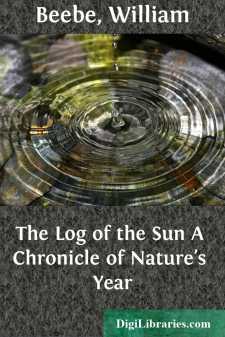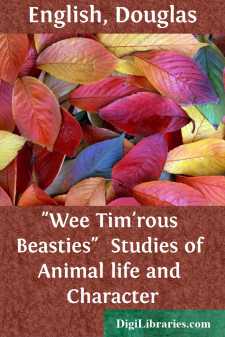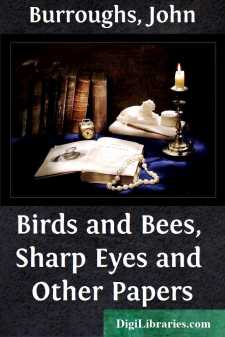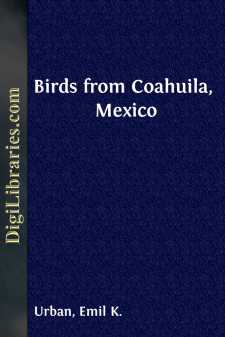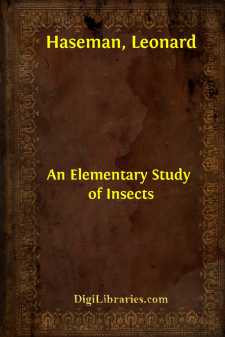Nature
Nature Books
Sort by:
by:
William Beebe
BIRDS OF THE SNOW No fact of natural history is more interesting, or more significant of the poetry of evolution, than the distribution of birds over the entire surface of the world. They have overcome countless obstacles, and adapted themselves to all conditions. The last faltering glance which the Arctic explorer sends toward his coveted goal, ere he admits defeat, shows flocks of snow buntings...
more...
LOBO THE KING OF CURRUMPAW Currumpaw is a vast cattle range in northern New Mexico. It is a land of rich pastures and teeming flocks and herds, a land of rolling mesas and precious running waters that at length unite in the Currumpaw River, from which the whole region is named. And the king whose despotic power was felt over its entire extent was an old gray wolf. Old Lobo, or the king, as the Mexicans...
more...
by:
Douglas English
MUS RIDICULUS Mus ridiculus! The taunt had been flung at him by a stout field-vole, and, by reason of its novelty as well as of its intrinsic impertinence, had sunk deep into his memory. He had felt at the time that “Wee sleekit, cowrin’, tim’rous beastie” was but a poor rejoinder. But he knew no Latin and chose what was next in obscurity. Besides, he was a young mouse then, and breathless with...
more...
INTRODUCTION Does the fact that a weak mortal sought an unprofaned sanctuary—an island removed from the haunts of men—and there dwelt in tranquillity, happiness and security, represent any just occasion for the relation of his experiences—experiences necessarily out of the common? To this proposition it will be for these pages to find answer. Few men of their own free will seek seclusion, for...
more...
by:
John Burroughs
BIOGRAPHICAL SKETCH.Nature chose the spring of the year for the time of John Burroughs's birth. A little before the day when the wake-robin shows itself, that the observer might be on hand for the sight, he was born in Roxbury, Delaware County, New York, on the western borders of the Catskill Mountains; the precise date was April 3, 1837. Until 1863 he remained in the country about his native...
more...
INTRODUCTION. This book is intended for those who, though ignorant on the subject, desire to know something about mushrooms. The first question which such an one asks upon finding a mushroom is, “What is its name?” If there is no one near to tell him, then follows the second inquiry, “How can I find it out for myself?” If wild flowers were concerned, Gray’s little book, “How the Plants...
more...
by:
Emil K. Urban
DISTRIBUTION OF THE KNOWN BREEDING BIRDS OF COAHUILA Topography and Climate Coahuila lies in the broad northern end of México, immediately east of the center of the continental mass. The mountains of Coahuila, which are part of the Rocky Mountain-Sierra Madre Oriental Axis, extend in a north-south direction and divide the lower lands into two areas, a larger one, a part of the Central Plateau, to the...
more...
by:
Leonard Haseman
INTRODUCTION In the preparation of a book of this nature, to be used in the grade schools, we realize that the one fundamental thing to keep in mind is the economic importance of the insect, be it good or bad. The child wants to know what is good and what is bad and how he can make use of the good and how he can get rid of the bad. And yet there is something more associated with the life, work and...
more...
The Freedom of the Black-faced Ram n the top of Ringwaak Hill the black-faced ram stood motionless, looking off with mild, yellow eyes across the wooded level, across the scattered farmsteads of the settlement, and across the bright, retreating spirals of the distant river, to that streak of scarlet light on the horizon which indicated the beginning of sunrise. A few paces below him, half-hidden by a...
more...
WHAT species of mammals occur on the "coastal island", barrier beach, of Tamaulipas? Are the closest relatives of these mammals on Padre and Mustang islands of Texas, instead of on the mainland of Tamaulipas, or are the mammals on the barrier beach distinct from all others? These were questions that Dr. von Wedel of Oklahoma City and I asked ourselves in March of 1950 when we were in southern...
more...


